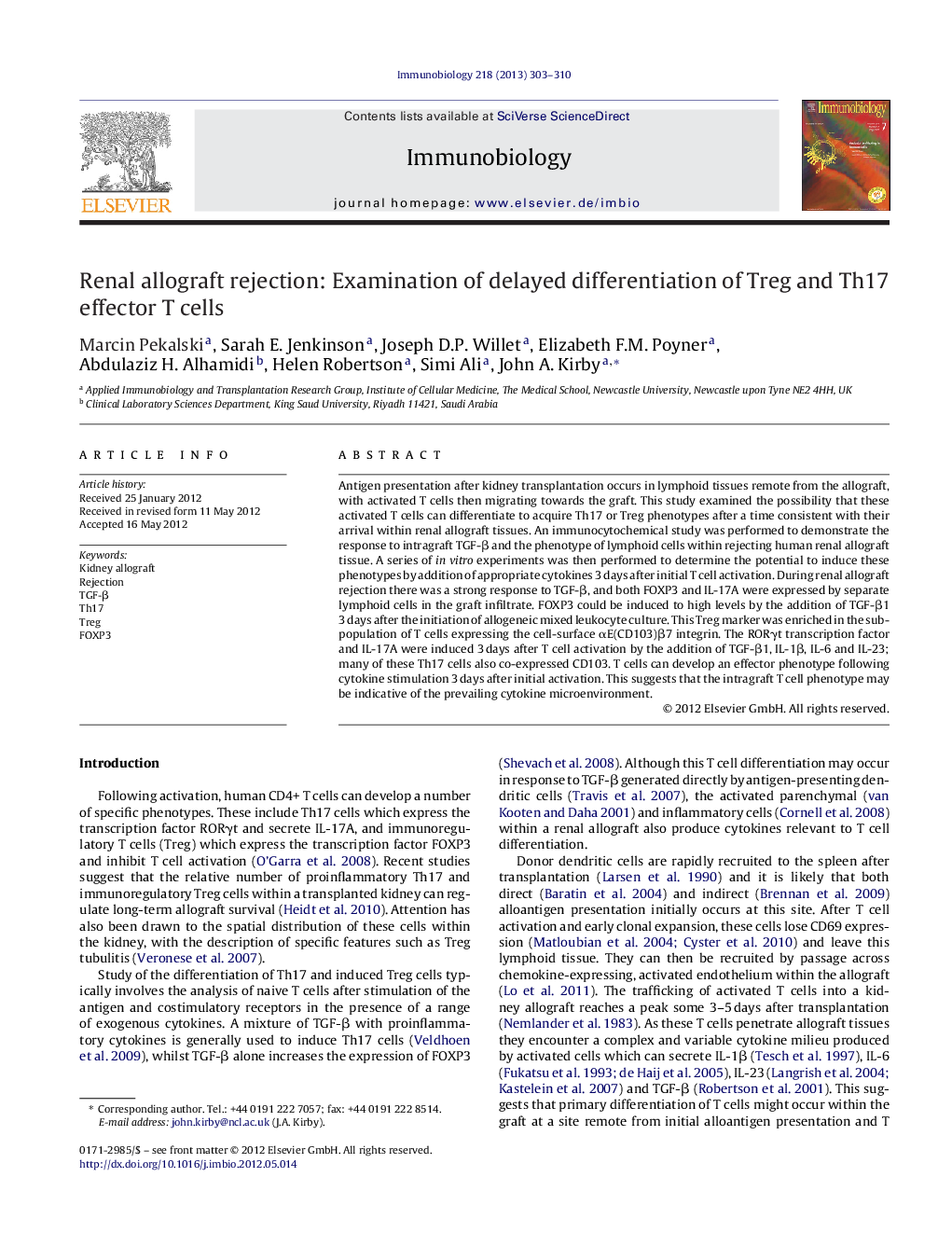| Article ID | Journal | Published Year | Pages | File Type |
|---|---|---|---|---|
| 2183143 | Immunobiology | 2013 | 8 Pages |
Antigen presentation after kidney transplantation occurs in lymphoid tissues remote from the allograft, with activated T cells then migrating towards the graft. This study examined the possibility that these activated T cells can differentiate to acquire Th17 or Treg phenotypes after a time consistent with their arrival within renal allograft tissues. An immunocytochemical study was performed to demonstrate the response to intragraft TGF-β and the phenotype of lymphoid cells within rejecting human renal allograft tissue. A series of in vitro experiments was then performed to determine the potential to induce these phenotypes by addition of appropriate cytokines 3 days after initial T cell activation. During renal allograft rejection there was a strong response to TGF-β, and both FOXP3 and IL-17A were expressed by separate lymphoid cells in the graft infiltrate. FOXP3 could be induced to high levels by the addition of TGF-β1 3 days after the initiation of allogeneic mixed leukocyte culture. This Treg marker was enriched in the sub-population of T cells expressing the cell-surface αE(CD103)β7 integrin. The RORγt transcription factor and IL-17A were induced 3 days after T cell activation by the addition of TGF-β1, IL-1β, IL-6 and IL-23; many of these Th17 cells also co-expressed CD103. T cells can develop an effector phenotype following cytokine stimulation 3 days after initial activation. This suggests that the intragraft T cell phenotype may be indicative of the prevailing cytokine microenvironment.
